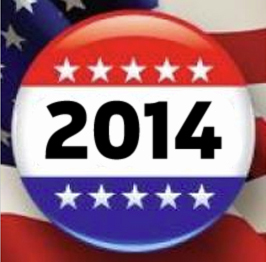AARP Hearing Center
Why More Americans Are Voting Early
By Richard E. Cohen, October 21, 2014 03:17 PM

President Barack Obama voted in his former Chicago neighborhood on October 20 — more than two weeks before Election Day. “I’m so glad I can early-vote,” he said as he cast his ballot. “It’s so exciting. I love voting.”
More than 2.6 million American already have joined him, according to official data.
Election Day, in fact, has become Election Month.
Political campaigns remain in full swing across the nation. Candidates continue to debate each other and run costly advertising campaigns. Pollsters look for changes in public sentiment and likely turnout. But early voting has become an increasingly important part of election strategy.
>> AARP Voter Education Guide
“Both parties have invested accordingly — and early data suggests the millions of dollars they’ve poured into those efforts are paying off,” the Washington Post reports.
Both parties have made big investments in encouraging early voting, says Michael McDonald, an associate political science professor at the University of Florida, who’s an expert on the topic. “Republicans are doing much better than 2010 in key states like Iowa,” he writes. “Democrats are doing better, too, but they start from a higher base.”
McDonald offers daily updates of early voting activity on his website, the United States Election Project. As of Oct. 21, 2,634,277 early ballots have been cast nationwide, including nearly 900,000 in Florida and more than 600,000 in California. Iowa — the battleground for a hard-fought Senate contest — has had 217,866 early ballots cast. That compares with a total of 349,216 early ballots cast in 2010, the previous midterm election.
In some states it’s possible to track the party registration of those who have voted early. In Iowa, that’s led to a tug-of-war over which Senate candidate — Democrat Bruce Braley or Republican Joni Ernst — is off to a better start. Even though Democratic absentee ballots are higher than four years ago, “the Democrats’ lead is much smaller, both numerically and as a percentage, than the lead they held at this point in 2010,” according to a news report.
>> Sign up for the AARP Advocacy Newsletter
Some 34 states officially authorize early voting. Voting in eight of them started in September, according to an association of state election-law officials. Interestingly, New York and Massachusetts — leading Democratic enclaves — are among the 16 states that do not sanction early voting.
Despite the widespread support for increasing voter participation, some critics are concerned about the trend toward more early voting.
“We should listen to what cautionary voices are telling us before we redefine ourselves as a nation of convenience voters and abandon one of the only remaining occasions on which Americans come together as a nation to perform a collective civic duty,” conservative columnist John Fund writes, citing such concerns as increased costs, greater potential for fraud and the fact that early voters lack full information about the campaign.
Voting “should be as easy and accessible as possible,” Donna Brazile, the Democratic National Committee’s vice chairwoman for voter registration and participation, wrote in a recent commentary for CNN, adding that “we shouldn’t restrict days or hours that allow working people a chance to both do their job and exercise their democratic right.”
Also of Interest
- Congressional Candidates Step Up Appeals to Older Voters
- What's the Maximum Social Security Benefit?
- Fight Fraud and ID Theft With the AARP Fraud Watch Network
- Join AARP: Savings, resources and news for your well-being
See the AARP home page for deals, savings tips, trivia and more































































